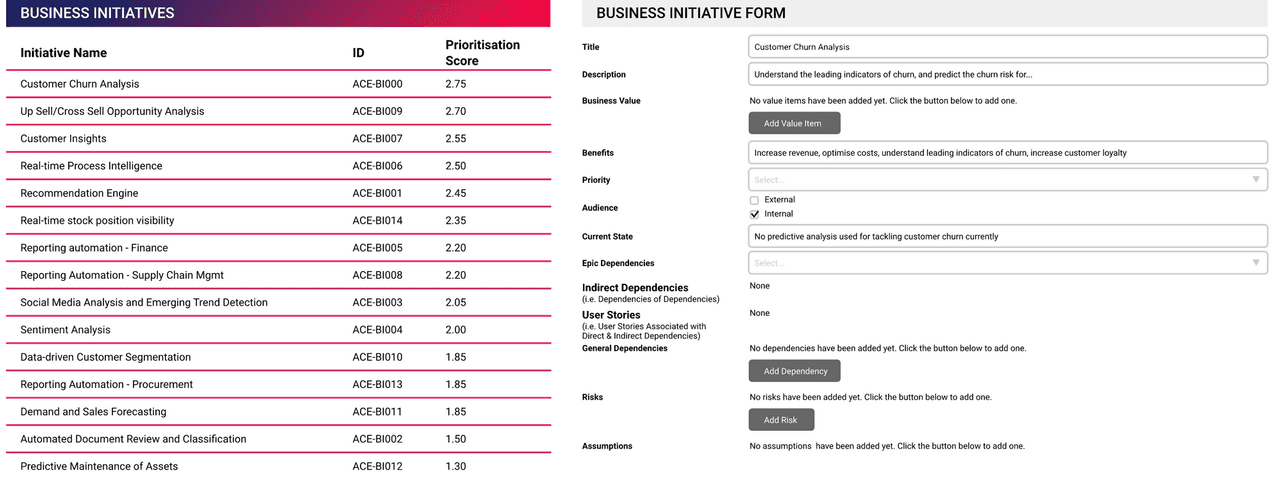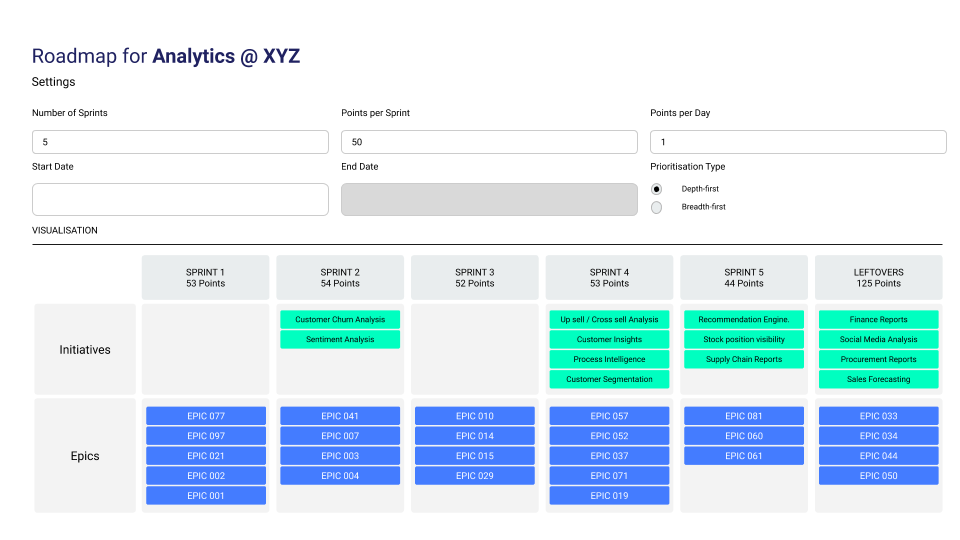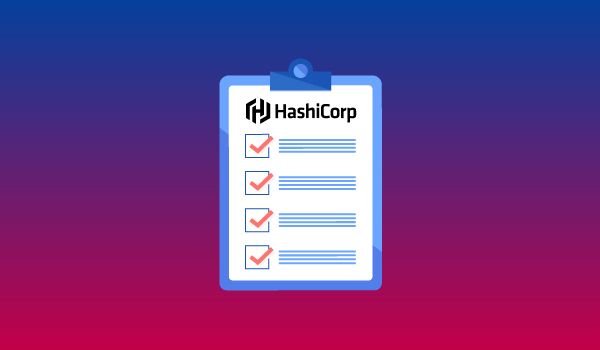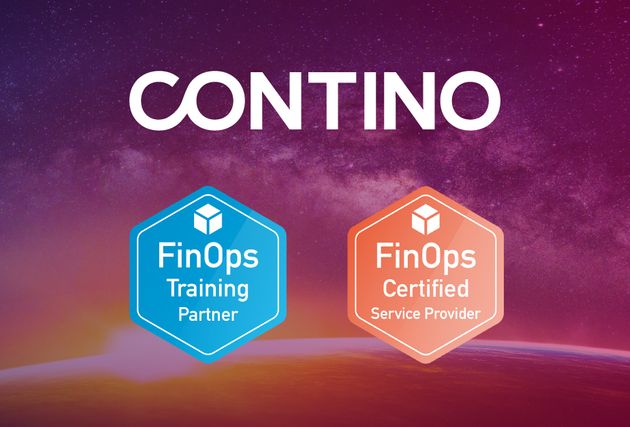How to Maximise ROI on Your Data Strategy with Outcomes-focused Analytics Roadmaps
According to Gartner, “through 2022, only 20% of analytic insights will deliver business outcomes.”
In other words, 4 out of 5 data insights don't translate to business outcomes. This suggests that organisations may not be getting adequate returns on their analytics investments.
At the same time, data-driven decisions are key towards maintaining competitive advantage. Gartner also states that “by 2022, 90% of corporate strategies will explicitly cite information as a critical asset and analytics as an essential competency”.
There’s often a disconnect between organisations’ data strategies and tangible business value.
This blog will explore how you can realise ROI on your data strategy with outcomes-focused analytics roadmaps.
An actionable analytics roadmap of prioritised business outcomes delivers tangible value, rather than just a timeline of technology capabilities. This is key to a successful analytics transformation.
But before we turn to the roadmaps, we need to explore how you are aligning your analytics use cases to organisational strategy and business value.
Why Strategic Alignment and Business Value of Analytics Use Cases Are Critical
It is no secret that organisations, irrespective of where they are in their data and analytics maturity, often face various challenges in their data and analytics endeavours. Some of the many issues that often contribute to lower than expected return on analytics investments include strategic misalignment and unclear value of analytics use cases, lack of business buy-in, and suboptimal selection/prioritisation of analytics use cases.
To maximise the ROI of your data strategy, it is important to ensure that your analytics use cases are curated and prioritised. Two important dimensions in any such prioritisation are strategic alignment and business value.
Strategic Alignment
Like any other investment an organisation makes, investments in analytics should also be aligned to the organisational strategy.
A robust data and analytics strategy helps in aligning analytics efforts to the overall organisational goals. This doesn’t mean that an organisation with a specific strategy should absolutely refrain from exploring use cases that might be aligned to a different strategy. Rather, the priority should be given to the use cases that are aligned to the organisation’s current business strategy. For example, a differentiation strategy doesn't mean that a use case geared towards cost reduction should never be looked at, as there is obvious business value in optimising costs. However, if an organisation pursuing a differentiation strategy only invests in cost reduction use cases and doesn’t consider use cases that enable or support differentiation, it is suboptimal and probably a missed opportunity to leverage analytics to strengthen competitive advantage.
Business Value
Anyone working in the data and analytics would probably agree that there continues to be a proliferation of proof of concepts (POCs) in this space. It is also common knowledge that POCs are often not operationalised or migrated to production to provide continuous insights and value. This happens due to multiple reasons, one of which can be the unclear value of the use case and hence, lack of buy-in from the intended stakeholders.
Articulating business value upfront and getting the stakeholders onboard early are important for adoption of analytics in an organisation. Business value can have multiple dimensions - revenue uplift, cost optimisation, better customer experience etc. It is important that all aspects of business value related to a use case are articulated and communicated to the stakeholders, and measurement of key value metrics are incorporated into the delivery plan of the use case.
In short, focusing on realising business value and enabling business objectives while deciding on analytics investments is important to ensure success. A robust data and analytics strategy and a clear roadmap of analytics use cases and supporting capabilities can help organisations stay on track.
Analytics Roadmaps: What and Why
An analytics roadmap is a key component of data and analytics strategy that translates the objectives set out in the strategy to a high level action plan.
It articulates how the benefits envisioned in the strategy will be realised, aligns the analytics activities in the organisation with the overall business objectives, and informs the key capabilities, milestones and dependencies involved.
An effective roadmap has the following characteristics:
- Multi-dimensional: identifies people, process and technology capabilities required to enable business outcomes
- Enhances transparency on analytics objectives and priorities
- Allows for agility to respond to changing priorities and competitive landscape
- Facilitates incremental realisation of capabilities
- Aligns expectation across different functions of the organisation
- Enables business teams to plan efficiently
From Business Strategy to Analytics Roadmap
The business strategy, which is the guiding artefact for the organisation, must inform the data and analytics strategy, allowing you to envision how data and analytics can enable and support the business objectives and identify appropriate analytics initiatives.
You can use your business objectives to derive a short-list of analytics use cases or initiatives. These are then prioritised according to a specific framework (more on which below), resulting in a set of ‘high value’ use cases.
This is used as the basis for a strategically-aligned and prioritised roadmap of analytics use cases and capabilities.
Let’s dive a little deeper into these different stages.
Curating an Analytics Roadmap
In our roadmap curation process, we start with a discovery phase to elicit the various analytics opportunities available to the organisation.
Stakeholders across various functions of the organisation are engaged to understand how analytics might add value to them. This is typically done in a collaborative workshop setting; however, depending on the specific engagement, a series of user interviews might replace the workshops. In this phase, we aim to understand the organisation’s business objectives, key business questions and requirements, and compile a list of analytics use cases that can enable the business objectives and answer the key business questions. This is not meant to be a static list, but a starting point. The artefact created at the end of this exercise is intended to be kept live by adding new use cases when they are identified in the future.
The list is subjected to a predefined prioritisation framework (in some cases, defining the framework can be an initial step in the discovery process) to obtain an understanding of the most relevant and high value use cases for the organisation. The output of this first part of the discovery phase is a prioritised list of analytics initiatives or use cases for the organisation. A bit more about the prioritisation framework in the subsequent section.
In the second part of the discovery phase, we dig a bit deeper into the use cases (what success looks like, what might be the expected end product etc.) to understand the capabilities (people, process and technology) required to realise and support them. Depending on the number of use cases and time available, this phase may be restricted to a limited number of high priority initiatives at first. This part also involves a current state assessment to understand the capabilities that currently exist in the organisation so that we can focus on the gap that needs to be filled to enable the outcomes. The capabilities can be considered as ‘epics’ from a program/project management perspective.
The output of this second part of discovery is a prioritised sequence of business outcomes and multidimensional capabilities that include people, processes and technology required to realise the outcomes.
The prioritised list of capabilities is then fed as input to a high level planning process that takes into account any constraints (e.g. resources, time etc.) and produces a high level plan or the roadmap. Speed-to-value and incremental realisation of capabilities, outcomes and benefits are key concepts in this planning process. The idea is to minimise the time the stakeholders have to wait before they see results and benefits.
Prioritisation Framework
While prioritisation may be a simple concept, the criteria used to compare different initiatives or use cases, and their individual weight need to be chosen carefully to provide an optimal roadmap.
A prioritisation framework can be called out in the data and analytics strategy or even borrowed from the business strategy itself, if it exists there, and should reflect the business objectives and priorities. The framework should be simple and transparent (communicated and understood across the organisation), consistent (same criteria and weightages should be used to evaluate all initiatives) and agile (to adapt to changing business priorities and competitive landscape).
As discussed earlier, strategic alignment and value/impact should be amongst the main criteria. Complexity or cost of implementation is another criteria commonly used that helps identify ‘low hanging fruits’. Depending on the specific organisation, there can be other criteria like compliance and regulatory requirements, impact on customers or external stakeholders, social and environmental impact etc.
Here’s what such a framework and prioritisation result for an initiative (Churn analysis in this case) might look like.
Digital prioritisation and roadmaps
Becoming agile enough to incorporate new use cases or respond to changing business priorities calls for the entire process of creating and visualising roadmaps to be easily repeatable. The challenge is to prioritise the analytics initiatives easily and efficiently, have clarity on dependencies between new and existing use cases and analyse the effect of changing prioritisation criteria and weights on the roadmap of opportunities and analytics capabilities.
This is where digitalization gives great benefits. For our engagements, we use a custom-built, cloud-hosted, serverless application developed in house to enable easy prioritisation and roadmap visualisation. A few indicative screens are provided below.
Key features of the application include outcomes and capabilities backlog, easy to use and intuitive interfaces to create/edit prioritisation frameworks and compare/evaluate use cases, roadmap creation and visualisation, and visualisation of dependencies amongst capabilities.
Such a digital solution can generate and visualise a draft road-map of initiatives based on customized criteria, easily visualise where newly identified use cases will fit in, perform ‘what-if’ kind of analysis to understand the effect of changing prioritisation criteria and weights on the roadmap, and easily visualise quick-wins and dependencies, thus, making the process of coming up with analytics roadmaps and keeping the roadmap up to date much simpler.
Key points
- Organisations continue to invest in data and analytics; however, many face challenges in translating analytics investments to business outcomes and value
- Realising business value and enabling business objectives should be the focus while deciding on analytics investments
- A robust data and analytics strategy and a clear, actionable roadmap of analytics initiatives and supporting capabilities (people, process and technology) can help organisations stay on track in their pursuit of benefits from analytics
- The approach to creating an effective analytics roadmap starts with understanding the business objectives and key business questions
- Focus on ‘speed to value’ and incremental realisation of capabilities, outcomes and benefits help minimise the time stakeholders have to wait to see results and benefits
- Agility to respond to changes in priorities and competitive landscape is critical for analytics roadmaps
- A consistent prioritisation framework, aligned to business strategy and value, to evaluate various analytics opportunities is important
- Digitalising the prioritisation and planning process can enhance effectiveness of the process by making it more simple, consistent, transparent and agile












